College life often revolves around an ecosphere of documents – assignments, presentations, lecture notes, and more.
Google Docs is a go-to for most students, largely due to its collaborative features and version history capabilities.
This treasure trove of diverse edits and revisions helps keep track of updates done within a document, effectively contributing to a useful record of changes. But, what happens when you need to delete this version history in Google Docs?
In the vast digital terrain of Google Docs, deleting version history can sometimes be a daunting task.
This blog navigates you through this terrain, serving as your ultimate guide.
You’ll learn the step-by-step process of eliminating document history, and gain valuable insights into managing collaborative content and maintaining your privacy by efficiently handling version history features.
Moreover, this blog introduces you to Undetectable AI’s latest productivity-enhancing tools, designed to improve your document workflow in Google Docs.
From understanding the basics to offering expert solutions, this blog serves as a comprehensive resource for effectively dealing with version history in Google Docs across various devices.
Key Takeaways
- Google Docs doesn’t allow direct deletion of version history, but creating a duplicate copy of the document provides a clean version without previous edits—helpful for protecting privacy or removing clutter.
- Version History is essential for collaboration, offering transparency, rollback options, and document integrity—but it can also expose sensitive edits if not managed carefully.
- Undetectable AI’s Human Auto Typer boosts productivity by streamlining version management, retracing changes, and reducing clutter in collaborative documents.
- For sensitive or academic work, combining smart version control with Undetectable AI’s Humanizer and Paraphraser helps maintain confidentiality and ensures your document remains natural, readable, and AI-safe.
- Optimizing your Google Docs workflow means managing version history smartly across all devices, while also using privacy-focused tools like Undetectable AI to control document visibility and authorship perception.
Understanding Version History in Google Docs and Its Importance

When you create or edit a document in Google Docs, a feature called Version History is activated.
This function allows you to view past versions of the document, tracking all changes that have been made since it was first created.
Each edit is logged with a timestamp and the user who made the change, thereby creating a complete history of modifications to the document.
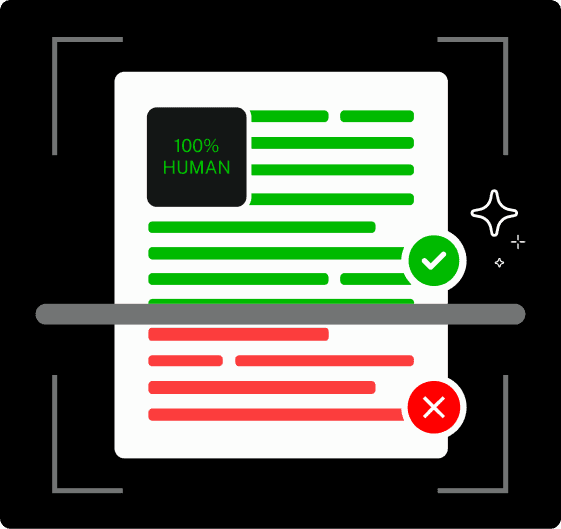
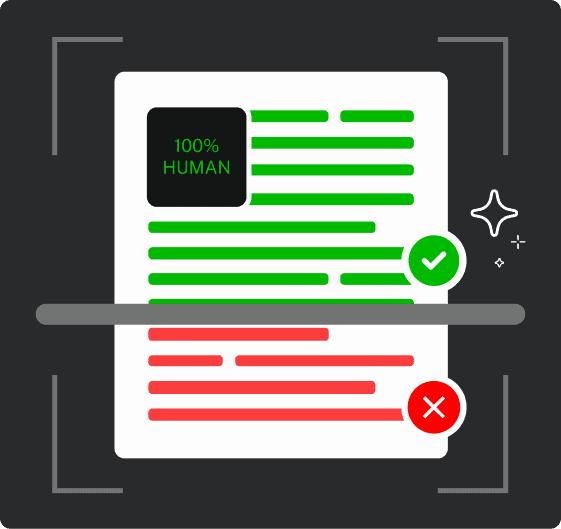
Never Worry About AI Detecting Your Texts Again. Undetectable AI Can Help You:
- Make your AI assisted writing appear human-like.
- Bypass all major AI detection tools with just one click.
- Use AI safely and confidently in school and work.
Version History plays a crucial role in collaborative environments, helping contributors understand the evolution of the content.
This feature is not only necessary for tracking changes, but can also serve as a backup if the document needs to be restored to a previous version.
Unraveling Google Docs: The Science Behind Version History
The science behind Google Docs’ Version History lies in Google’s pioneering cloud-based technology, offering unparalleled real-time collaboration and version control capabilities.
This feature provides users with an audit trail of every change made to their document, from content edits to format adjustments, each marked with a timestamp and the collaborator’s name.
It’s this meticulous tracking system that has made Google Docs a front-runner among online editing platforms, boosting teamwork efficiency and promoting transparent workflows.
Whether you’re managing complex project documents or a simple shared grocery list, understanding the science of Google Docs’ Version History can greatly enhance your document management skills.
Google Docs and Collaboration: The Essential Role of Version History
Google Docs’ Version History is fundamental to fostering effective collaboration in the digital work environment and significantly contributes towards efficacious project management.
This dedicated function enables teams to monitor and track individual contributions, specific edits, and amendments from inception to finalization.
Such a historical record of revisions aids in maintaining transparency throughout the collaborative workflow, accommodating diverse perspectives, and facilitating conflict resolution during joint document creation.
Hence, Google Docs has revolutionized collaborative online document editing and management, making Version History an indispensable tool for team projects and joint undertakings.
The Art of Restoring Edits: Advantages of Google Docs Version History
Mastering the art of restoring edits offers multiple benefits, thanks to the Google Docs Version History feature.
This beneficial tool assists in seamlessly restoring content to any previous state, acting as a shield against unintended changes or accidental deletions.
It reinforces an unsaid insurance for your documents, enabling unlimited undos to save crucial information from being lost.
Particularly useful in collaborative content creation, it preserves every contributor’s inputs, facilitating retrieval of preferred versions at all times.
It brings forth a reactive approach to concise document management and content refining in Google Docs, considerably lowering the risk of permanent data loss.
A Study of Backups in the Cloud: The Significance of Google Docs Version History
In the era of cloud computing, having an efficient backup system is quintessential. Google Docs, with its ‘Version History’ feature, provides an exceptional backup mechanism for every single edit.
This automatic backup system ensures that even if a user mistakenly alters or deletes document content, a previous version is always at hand to restore.
Reflecting on the importance of Google Docs version history, we delve into the role it plays in managing backups in the cloud.
We explore the concept of Google Docs backup strategies, how to retrieve Google Docs deleted revisions, and maximizing the Version History feature for efficient and fail-safe cloud backups.
Step by Step Tutorial: Removing Document History
The very essence of Google Docs lies in its ability to nurture collaboration and seamless editing, with the “Version History” feature being at the core of this functionality.
This feature allows you to view all the changes and revisions made throughout the lifecycle of a document, aiding in tracking and understanding the progression of ideas.
However, there might be instances where you would want to delete this history, whether to declutter the document, protect sensitive edits, or for any other reason.
The process is not straight-forward, but with the help of this step-by-step tutorial, you’ll be able to navigate your way around it.
Navigating to Google Docs Version History: Key Steps
Navigating to the Version History in Google Docs is an essential skill for efficient document management.
By following a few key steps, users can easily access a complete history of changes made to their document.
Whether you’re working on a collaborative project or tracking your personal edits, understanding how to view changes in Google Docs is vital.
Simply go to the “File” menu, select “Version History”, and choose “See Version History” to monitor all edits ranging from minor text revisions to significant content rearrangements.
This invaluable tool aids in optimizing your Google Docs experience, heightening productivity and collaborative success.
The Art of Creating a Duplicate Copy: Necessity in Removing Document History
Creating a duplicate copy of a Google Docs document is a vital step in removing document history.
This process, technically known as “cloning,” provides you with a clean slate version of your original document, devoid of edit history.
It’s essential to understand that Google Docs doesn’t extend a simple ‘delete history’ option; hence duplicating the document and working on the clone copy is an effective strategy.
Not only does this safeguard your original document’s revision history, but it also provides peace of mind, knowing that the original work is untouched.
The art of creating a duplicate copy elevates Google Docs’ user privacy while managing collaborative content, especially when confidentiality is a concern.
Stepwise Guide to Delete Google Docs History: Making Efficient Changes
Learning how to delete Google Docs history is an important skill for efficient collaboration and document management.
By creating a duplicate copy, renaming it, and then discarding the original document, you can effectively remove the version history, ensuring privacy and a clean slate for future edits.
This process, termed as ‘clean versioning,’ while not direct, provides a necessary workaround for deleting Google Docs history.
Acquiring the knowledge of managing version history in Google Docs significantly improves collaboration, boosts your Google Docs skills, and aids in efficient document management, especially critical in team settings or highly collaborative projects.
Maintenance Tips: Safeguarding Edits Without Version History in Google Docs
No matter the type of document, be it for business or personal use, safeguarding your edits in Google Docs is crucial, especially when Version History is unavailable.
Ensure to routinely save your edits manually, even if Google Docs automatically saves changes. Regularly create back-ups of your important documents to a separate location, such as an external hard drive or a cloud service provider like Google Drive or Dropbox.
When collaborating, set permissions wisely, allowing only trusted people to edit. Make use of add-ons like Draftback to visualize revisions, acting as an alternate version history.
These Google Docs safety tips can save you from mishaps like abrupt deletions, hacks, or system glitches, ensuring your peace of mind.
Managing Collaborative Content: Strategies for Deleting Version History

In today’s digital era, Google Docs is a game-changer for managing collaborative content.
However, with multiple collaborators comes the challenge of preserving the integrity of the document. This is where the feature of Version History becomes critical, as it allows you to track every single edit.
The question arises: what if you want to delete this history? Here, we discuss effective strategies for managing and deleting version history in Google Docs while ensuring smooth collaboration.
Understanding the Significance of Version History in Collaborative Projects
The feature of Version History in Google Docs is a significant tool, particularly in the realm of collaborative projects.
Its ability to track and record all changes and contributions by different team members becomes essential for collaborative transparency and smooth communication.
The significance extends beyond mere change-tracking, helping in conflict resolution regarding document revisions, and fostering team cooperation by clearly outlining each member’s contributions.
With tools like Google Docs transforming remote teamwork, understanding the value of Version History in managing and preserving the integrity of shared content becomes crucial in a digitally collaborative environment.
Role of Administrative Privileges in Deleting Google Docs Version History
When it comes to managing and deleting version history in Google Docs, an individual with administrative privileges plays a crucial role.
Not only do they have the authority to make edits and adjustments to the document, but they also have control over the version history, including the power to delete it.
For instance, they can manipulate the ‘see version history’ option to strategically monitor and delete revision history, thus preserving the document’s integrity.
This reinforces the significance of administrative control in managing collaborative content while facilitating efficient data protection in Google Docs.
Understanding how to navigate these privileges helps to safeguard sensitive information and fosters improved team collaboration.
Practical Tips to Manage Version History in Group Projects
Managing version history in group projects can pose quite a challenge, especially when coupled with Google Docs’ intricate functionalities.
To streamline this process, it is recommended to assign specific roles to team members, thereby minimizing unsystematic edits and clarifying what changes have been made.
A clear communication strategy can significantly help in preventing unnecessary duplications or accidental deletions.
Also, taking advantage of Google Docs’ “name versions” feature to label significant edits under understandable titles can greatly simplify tracking modifications.
Regularly checking the “Version History” and saving pinnacle versions can also be crucial in preserving document integrity during the hustle of team collaboration.
Harnessing Google Docs Version History for Efficient Team Collaboration
As an integral feature, Google Docs version history can become a vital tool for enhancing team collaboration efficiency.
Version History allows team members to seamlessly trace all edits, fostering a shared understanding and reducing time spent on catching up with changes.
It cultivates a transparent work environment and helps in assigning responsibility for each change made.
This iterative approach can help in preventing miscommunication, ensuring everyone is on the same page about the current state of the document, and maintaining the integrity of original ideas.
Therefore, learning to harness Google Docs version history is key to promoting effective teamwork in digital workplaces.

Google Docs Privacy Tips: Safeguarding Your Edits by Deleting Version History
Privacy is a pressing concern in our digital age, and Google Docs, despite offering collaboration and ease, is no stranger to this issue.
Even as we make use of Google Docs for ease of online work, safeguarding the integrity and confidentiality of our edits becomes important.
Deleting version history can be part of this scenario, providing a cleanup process that helps maintain discretion and control over document content.
Ensuring Document Confidentiality: Deleting Version History in Google Docs
Google Docs facilitates real-time collaboration but managing who sees what can be a challenge, given the transparency of Version History.
Ensuring document confidentiality can involve deleting Version History in Google Docs. It’s a necessary step when dealing with sensitive data, as every change is stored and accessible.
Deleting Version History can serve as an additional layer of privacy, alongside robust sharing permissions, to secure your private edits, revisions, and sensitive data.
Understanding this process helps maintain confidentiality, thus, safeguarding the document’s integrity in a collaborative environment.
Discreet Editing: How Deleting Google Docs Version History Protects Your Privacy
Using Google Docs offers the benefit of real-time collaboration, but at times, it’s essential to maintain the confidentiality of your edits, especially when working with sensitive information.
Deleting your Version History in Google Docs ensures your edits remain private and unseen by unauthorized eyes.
Carefully managing your Version History promotes discretion, safeguarding against inadvertent disclosures.
Clearing the document’s revision log helps maintain a cleaner workspace, reducing the clutter of unwanted versions.
Thus, prudently removing the document history in Google Docs can significantly contribute to protecting your digital privacy and providing a safer and more private editing environment.
Navigating Google Docs Privacy Settings: The Role of Version History
Google Docs Privacy Settings play a crucial role in maintaining the confidentiality of your document edits and changes.
Your version history serves as an audit trail, recording every modification made by collaborators. However, controlling who sees these edits is essential for privacy.
By effectively navigating Google Docs privacy settings, you can manage who gets access to this version history, thus ensuring the security of your document.
These settings can also be adjusted to receive notifications when significant changes are made, adding an extra layer of security.
Comprehensive understanding of these privacy settings in Google Docs can enhance your document’s protection, providing you improved control over your content’s visibility and version history.
Mastering Google Docs Security: The Importance of Deleting Version History
Safeguarding one’s digital documents is paramount, especially when they carry sensitive or valuable information.
Deleting version history in Google Docs can be an integral part of your security strategy.
By eradicating past edits and changes, you eliminate remnants of sensitive information that may have been inputted and then deleted, thereby enhancing the confidentiality of your document.
This mastery over your document’s history also affords you more control, as collaborators can only view the final version rather than every single historical version.
Therefore, mastering Google Docs security through censorship of your version history is both a shield and a sword in your digital workspace.

Optimizing Google Docs Usage: Dealing With Version History
Optimizing your Google Docs usage involves understanding and efficiently handling Version History.
Google Docs keeps a record of all edits and changes made to your document, stored in ‘Version History.’
This feature allows users to revert to previous versions of their document if needed. However, managing this history can sometimes seem overwhelming.
In this section, we will delve into strategies for effectively dealing with Version History, helping you optimize your usage of Google Docs.
Navigating Through Google Docs Version History: Decoding Its Interface
Navigating through Google Docs version history can initially seem challenging due to its intricate interface.
However, with a deeper understanding, you’ll find it’s designed to provide a comprehensive view of all document modifications.
By clicking on ‘File’ and then ‘Version history’, you can access a detailed list of all past versions, each indicated with the editor’s name and timestamp.
Additionally, it highlights the text changes, making it easier to track revisions. This feature also comes in handy if you need to revert documents to a prior state.
Indeed, understanding how to decode the Google Docs version history interface is pivotal for efficient document management and collaboration.
Mastering Version Control in Google Docs: Techniques for Efficient Navigation
Mastering version control in Google Docs can lead to a more efficient workflow, simplify collaboration, and reduce the risk of losing work.
A firm grasp of the Version History feature can allow for effective navigation through a document’s evolution, aiding in drawing beneficial insights about the team’s progress and fluctuations in ideas.
Whether you want to revisit an earlier draft, track changes made by collaborators, or restore a version, understanding the nuances of Google Docs’ version control can be highly beneficial.
Applying reliable version control techniques can also help avoid potential pitfalls such as unintended overwrites, providing an efficient pathway to your document management goals in Google Docs.
Google Docs Tutorial: Controlling Version History to Optimize Your Workflow
Efficient workflow is paramount in any setting, and Google Docs provides tools to help optimize this.
The Version History feature is a key function that keeps a well-documented, timestamped log of all edits, a tool that can be aptly harnessed to manage your workflow.
Whether you’re collaborating remotely on a shared project or working individually, understanding how to control and manage your Google Docs Version History can streamline your process.
From restoring previous versions, spotting crucial changes, and ensuring data integrity, optimizing your workflow with Google Docs version history fosters productivity, transparency, and accuracy in your documentation process.
Enhancing Your Google Docs Experience: Tips for Handling Version History
While both Microsoft Word and Google Docs feature version history, Google Docs’ capabilities are much more powerful and can greatly enhance your document management experience if handled correctly.
By learning to effectively review, restore, and delete version history, you unlock the ability to track your revisions, return to previous edits, and keep your workspace clean and focused.
It’s essential to regularly review your document’s evolution, especially in team collaborations.
Diving into the depths of version history can let you understand the context of edits, reducing misunderstanding, and fostering better teamwork.
Remember, being proactive with your version history management will ultimately lead to noticeably smoother operations within Google Docs.
How Utilizing the Undetectable AI Human Auto Typer Assists in Managing Google Docs Version History
Managing Google Docs version history can often seem complex for inexperienced users.
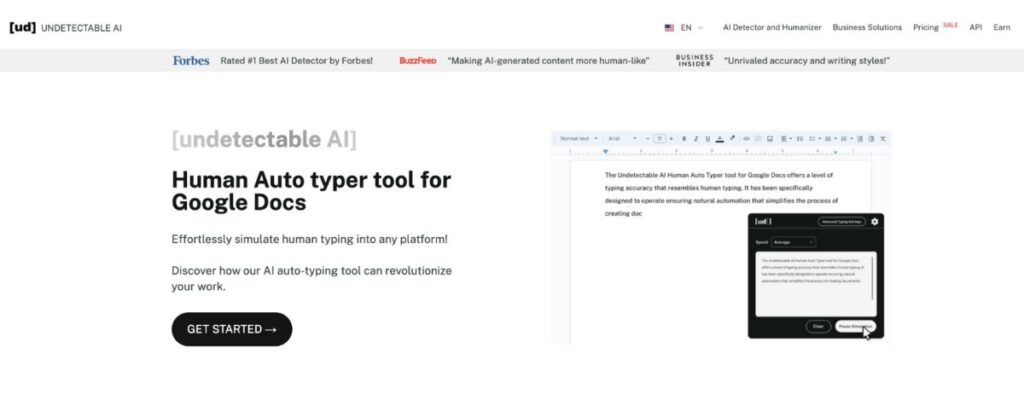
One of the effective ways to simplify this task and make it less time consuming is by adopting intelligent technologies like the Undetectable AI Human Auto Typer.
This contrivance is designed to help manage your version history with ease, making adjustments, retracing your steps, and enhancing overall work dynamics.
Understanding the Role of the AI Human Auto Typer in Google Docs History Management
Understanding the Role of the AI Human Auto Typer in Google Docs History Management is essential for optimized workflows and efficient document manipulation.
The AI Human Auto Typer is a technologically advanced utility that synchronizes with Google Docs, assisting users in seamless navigation through Version History.
This AI-powered tool can intelligently detect changes, allowing for automated search and retrieval of specific version data.
By assisting in quick location and restoration of edits, the AI Human Auto Typer proves instrumental in managing large version histories, reducing manual labor and enhancing productivity.
Understanding its functionalities can significantly simplify the process of navigating Google Docs Version History, especially in collaborative documents with extensive revisions.
Optimizing Google Docs Workflow: How AI Auto Typer Impacts Version History
The application of the AI Human Auto Typer in Google Docs elevates the management of Version History to new levels.
By automating the typing, it reduces manual editing errors that could clutter up the version history, streamlining workflow on Google Docs.
The technology brings jargon-free ease in tracking edits, highlighting modifications, and maneuvering through multiple revisions.
Furthermore, the AI Auto Typer’s swift adaptability to editing patterns facilitates real-time changes, diminishing the necessity for extensive version history and ultimately, optimizing Google Docs workflow.
Exploring AI Human Auto Typer Functions Related to Google Docs Version History
The AI Human Auto Typer unlocks a new level of convenience and dynamism when it comes to managing Google Docs Version History.
Existing as a smart technology, it can help track and manage edits done, exhibit automatic typing capabilities in a human-like manner, and enhance overall document management.
Additionally, the tool’s artificial intelligence prowess can assist in mitigating the complexities tied to accidental deletion of critical document revisions, a common issue faced when dealing with Google Docs Version History.
As such, users have a combatant tool in handling and understanding their document’s historical progression effectively and efficiently.
Improving Google Docs User Experience: The Undetectable AI Human Auto Typer Advantage
When working on Google Docs, user experience is paramount, and the Undetectable AI Human Auto Typer significantly enhances that experience.
This advanced technological tool offers several benefits, including efficiently managing version history, aiding in seamless document collaboration, and optimizing your Google Docs workflow.
Offering a unique combination of AI-powered assistance and human-like typing, the auto typer reduces workload, prevents errors, and ensures the precision of edits.
The result is a smoother, more efficient Google Docs experience, where managing and navigating version history, even on complex documents, becomes a streamlined process, empowering users to work with heightened productivity and confidence.
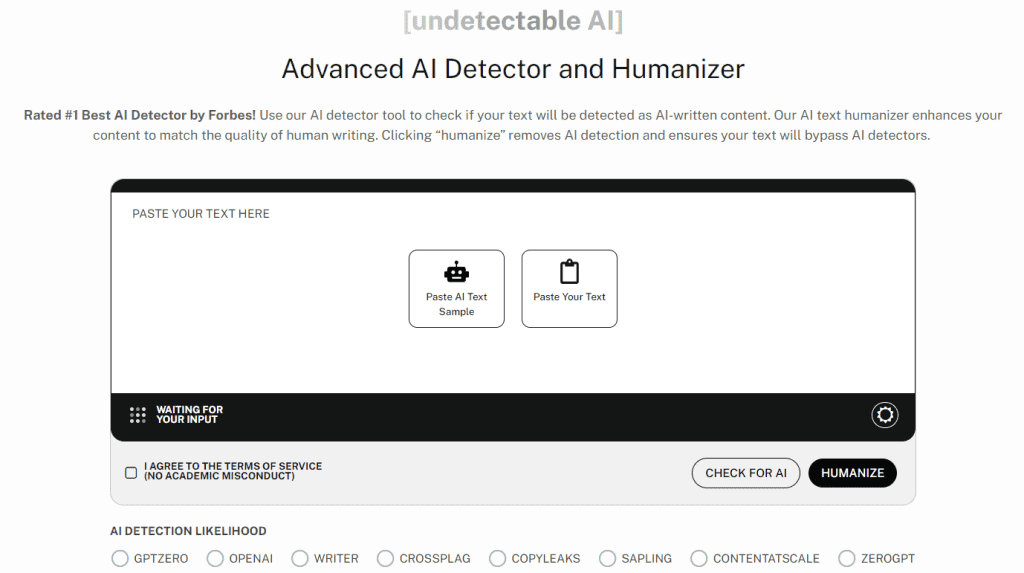
Google Docs: Managing and Deleting Version History on Different Devices
As a flexible platform available on a variety of devices, Google Docs offers you the ability to effectively manage and delete your document’s version history whether on desktop, tablet, or mobile phone.
The process can vary slightly depending on the device you are using. Understanding these differences can equip you to better handle your version history, ensuring document integrity and collaborative success.
Desktop Guide: Deleting Version History on Google Docs
Google Docs simplifies collaboration in the digital workspace, and efficiently managing your document’s Version History on the desktop interface is an essential part of it.
Deleting Version History requires navigating the user-friendly menus that Google Docs provides on your desktop.
Start by opening your document, go to the File menu at the top of the screen, then click on Version History.
From there, select ‘See Version History’, revealing a sidebar with all previous document versions. However, Google Docs by default, retains all version history data and direct option to delete isn’t provided but creating a fresh copy without the history could be the workaround.
Mastering this approach to manage Google Docs Version History on your desktop can enhance your user experience, promote effective collaboration, and protect the integrity of your documents.
Maintaining Version History in Google Docs: A Comprehensive Mobile User Guide
Google Docs offers mobile users a robust suite of features, including the ability to manage Version History effectively even while on the go.
Whether you’re using an iPhone or an Android device, keeping track of revisions and changes to your collaborative work is imperative.
By understanding how to view previous versions, revert to an older edit, or even delete specific entries from the history on your mobile device, you ensure seamless collaboration and content consistency.
Don’t let the compact size of your mobile device limit your capabilities in managing Google Docs Version History.
With proper understanding and application of the process, you can harness the power of Google Docs mobile version efficiently and with ease.
Tablet Simplified: Managing Google Docs Version History
Google Docs’ version history management on tablets provides a simplified yet equally efficient experience as on desktop.
With intuitive controls and user-friendly interface, tracking, reviewing, and restoring past edits on your tablet does not require extensive tech knowledge.
By tapping ‘Version History’ in the Google Docs app menu, you can conveniently view the entire edit timeline, toggle between changes, and even restore a preferred version if need be.
While the smaller screen might present some challenges, optimizing tablet settings and using a stylus can significantly enhance your experience.
Conclusively, Google Docs tablet version eliminates the device barrier in managing document revisions, promoting productivity on the go.
Platform Differences: How to Delete Version History on Google Docs across Devices
When dealing with Google Docs, managing and deleting your document’s version history varies across different platforms like desktop, smartphones, and tablets.
It’s essential to understand platform-specific methods for handling version history, such as deleting an edit history on Google Docs iPhone app or managing version history in Google Docs Android app.
Each platform has subtle nuances, like the locations of options in the interface.
Though the core functionality remains the same, grasping these slight variations can enhance your overall Google Docs experience, irrespective of the device you’re using, and ensure efficient version control on Google Docs across all devices.
Expert Solutions: Overcoming Challenges in Deleting Google Docs Version History
Managing Google Docs’ Version History might seem complex, especially when it comes to deleting or retaining key revisions.
The process can sometimes present problems, like accidental deletion of important history data or difficulty navigating the user interface, causing stress and confusion.
This section aims to offer expert solutions, tips, and strategies to overcome these challenges and make managing your Google Docs Version History, a breeze.
Expert Guide: Navigating the Google Docs User Interface
Understanding the Google Docs user interface is an efficient way to utilize and make the most of this versatile tool.
The focus should be on understanding feature placements, such as locating the version history in the file menu, managing collaborators in the share settings, and effectively formatting text using the toolbar options.
Mastering these basics will enhance your content creation process, making it easier to navigate changes in your document’s history.
An expert guide to navigating Google Docs not only helps you manage your version history intricately but also optimizes your document handling and editing experience for increased productivity.
Understanding the Process: How to Prevent Accidental Deletion of Google Docs History
Preventing accidental deletion of Google Docs history involves understanding the process and taking deliberate actions.
Important steps include regular backups, careful review before removing changes, and taking advantage of Google’s “prevent editors from changing history” feature.
Through better awareness of these safeguards, users can mitigate the risks of inadvertent loss of crucial information.
Therefore, understanding how to prevent accidental deletion from Google Docs Version History becomes an essential skill for maintaining document integrity and continuity of work in a collaborative digital environment.
Avoiding Common Mistakes when Deleting Google Docs Version History
One vital aspect to consider when managing your documents on Google Docs is to avoid the common mistakes when deleting version history.
Unnecessary deletion of the history, forgetting to make backup copies, and overlooking the importance of administrative privileges can lead to unintended complications.
Understanding how to properly use and delete the version history, including how to restore deleted Google Docs history, is essential to prevent accidental information loss.
Additionally, knowing how to harness these controls provides a better experience for you and others working collaboratively, providing an efficient and streamlined workflow when using Google Docs for long-term projects.
Maximizing Efficiency: Easy Steps to Manage Google Docs Version History
In the modern era where digital collaboration is the key to productivity, understanding how to manage Google Docs Version History efficiently can enhance your workflow significantly.
It includes utilizing features like naming versions for clear identification, using the “See new changes” option to instantly familiarize with recent modifications, or thoroughly exploring the detailed version list to revert any undesired changes.
Whether you’re working as part of a remote team or engaging in college group projects, mastering these functions of Google Docs can streamline your process, foster seamless collaboration, and boost overall productivity.
Enhance Google Docs Privacy with Undetectable AI Tools
When managing sensitive edits or removing version history from collaborative Google Docs, having the right tools to preserve privacy is critical.
Undetectable AI offers several 2025-ready tools designed specifically to help users humanize content, prevent AI detection, and rewrite text more naturally and securely.
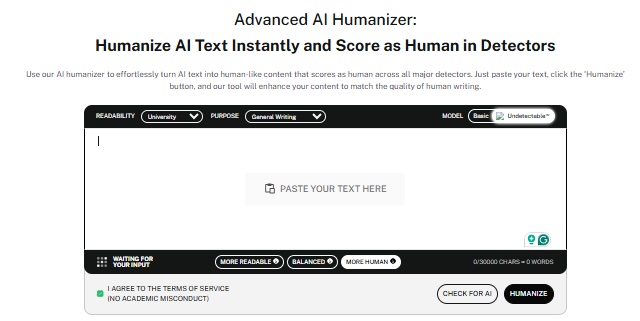
AI Humanizer – Makes robotic or overly formal text sound natural and expressive.
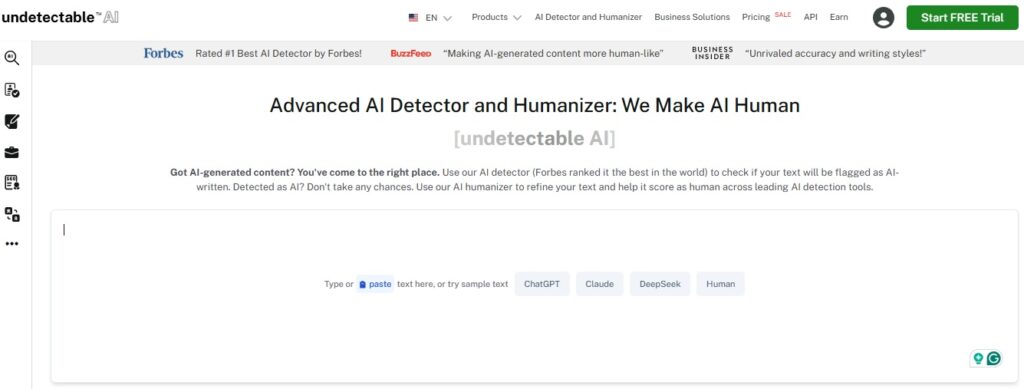
AI Detector – Scans your content to see if it’s likely to be flagged as AI-generated.
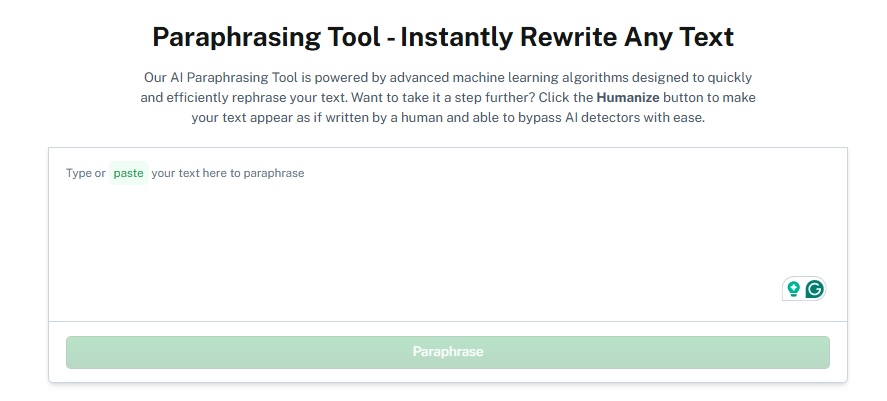
Paraphrasing Tool – Rewrites text without changing its original meaning, useful when duplicating and refreshing Google Docs content.
Start exploring—our AI Detector and Humanizer are waiting in the widget below!
Frequently Asked Questions
What is Google Docs Version History?
Google Docs Version History is a feature that keeps track of all changes made to a document over time.
This includes edits, added or deleted content, and comments made by collaborators. It provides users with the flexibility to revert to any previous version of the document if required.
How can I delete my Google Docs Version History?
While Google Docs doesn’t allow you to directly delete Version History, a common workaround is to make a copy of the document.
The new document does not carry over the Version History from the original one, effectively eliminating any unwanted history.
Can all contributors delete Version History in Google Docs?
Only the owner of the document or those with edit access can make modifications to the document, including creating a duplicate to delete the Version History.
View-only or Comment-only access does not grant this permission.
Is it possible to restore my Google Docs Version History once it’s deleted?
Unfortunately, once Version History has been deleted by making a copy of your document, it cannot be restored.
This is why it’s important to ensure that you truly want to eliminate the history before doing so.
How does the Undetectable AI Human Auto Typer assist in managing Google Docs Version History?
The Undetectable AI Human Auto Typer is an intelligent technology designed to optimize your usage of Google Docs.
It helps make adjustments, retrace steps in your document, and reduce the effort needed in managing Version History, thereby enhancing your overall work dynamics.
Summarizing the Steps to Delete Version History in Google Docs & Enhancing Efficiency Using the Undetectable AI Human Auto Typer
This article has provided a comprehensive guide on managing and deleting Version History in Google Docs, an important tool for tracking changes and maintaining the integrity of documents.
While this feature can be an immense help, it can sometimes lead to clutter and confusion.
We looked into different aspects such as how Version History functions, steps to delete it, and managing the history across different devices – equipping readers with the right knowledge to effectively utilize Google Docs for their projects.
Furthermore, we also highlighted strategies for those who collaborate on documents and need to maintain privacy of edits, as well as tips to optimize Google Docs usage.
One standout solution for managing Google Docs version history with ease is the deployment of intelligent technologies like the Undetectable AI Human Auto Typer.
With its key features designed to make tracking changes simpler, Undetectable AI Human Auto Typer can significantly enhance users’ document management and overall work dynamics.
So, whether you’re a solo user editing a personal project or a team collaborating on shared documents, consider incorporating this tool into your Google Docs management strategy.
Join the growing community of educators and students who trust Undetectable AI.
